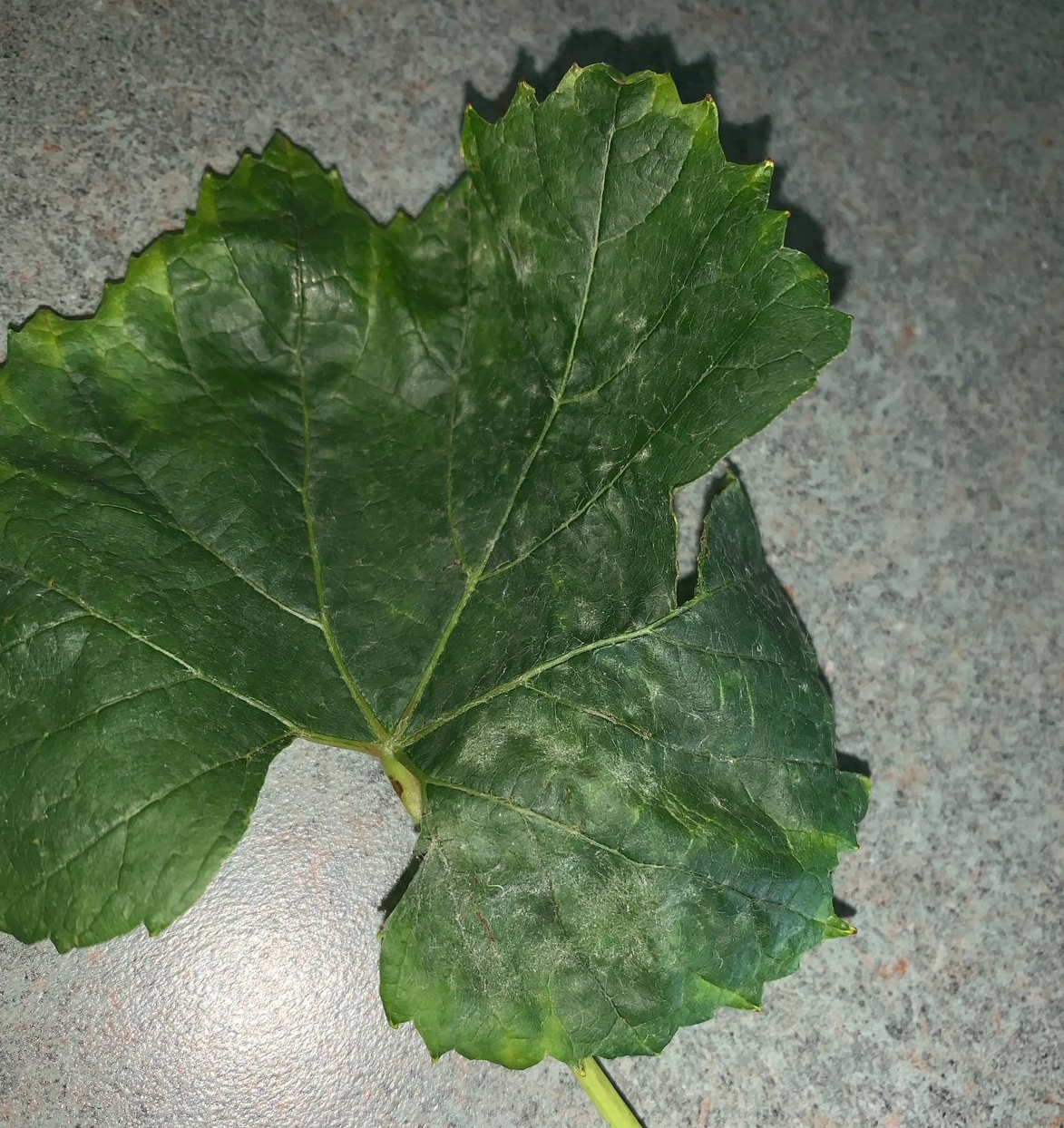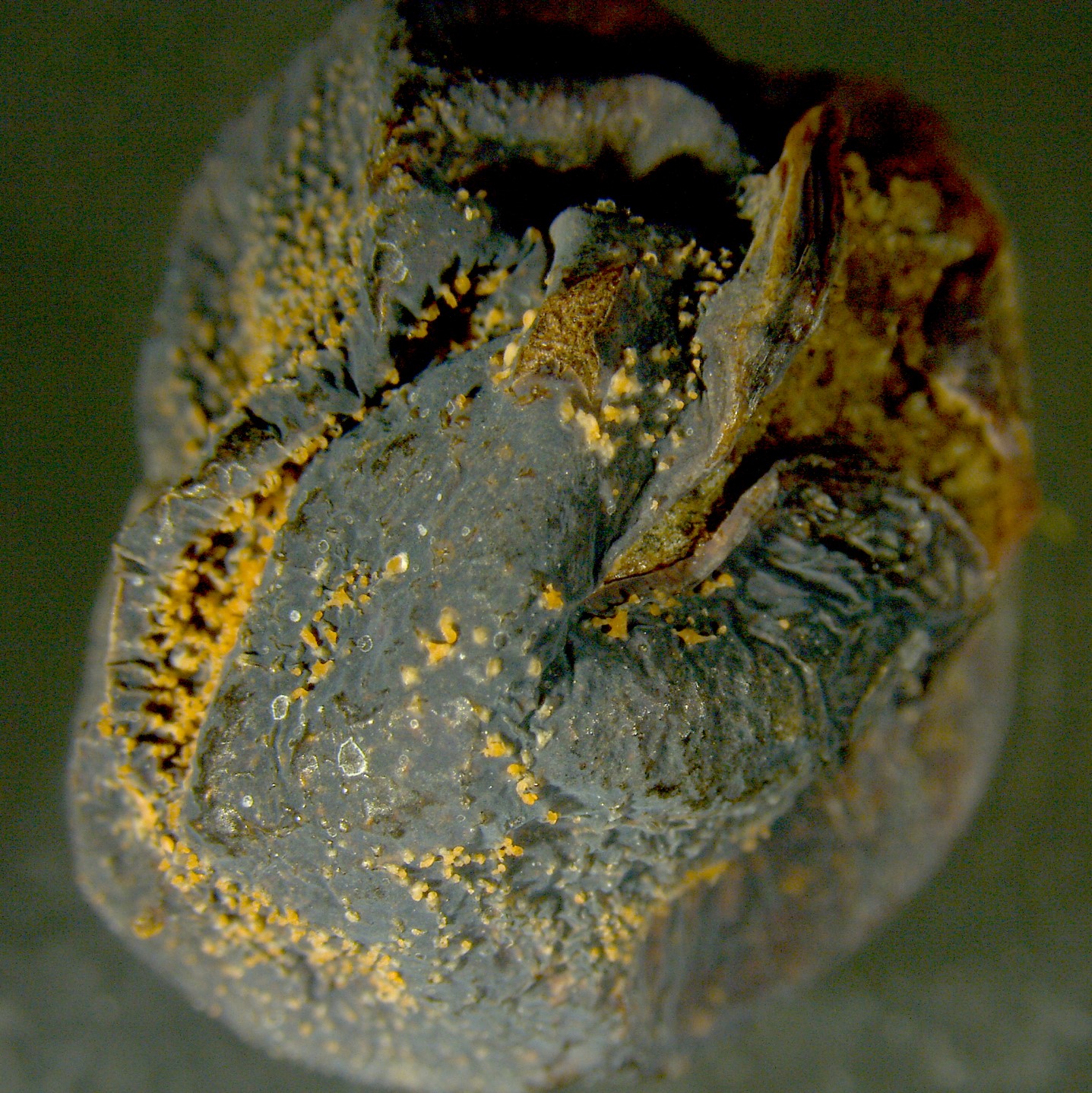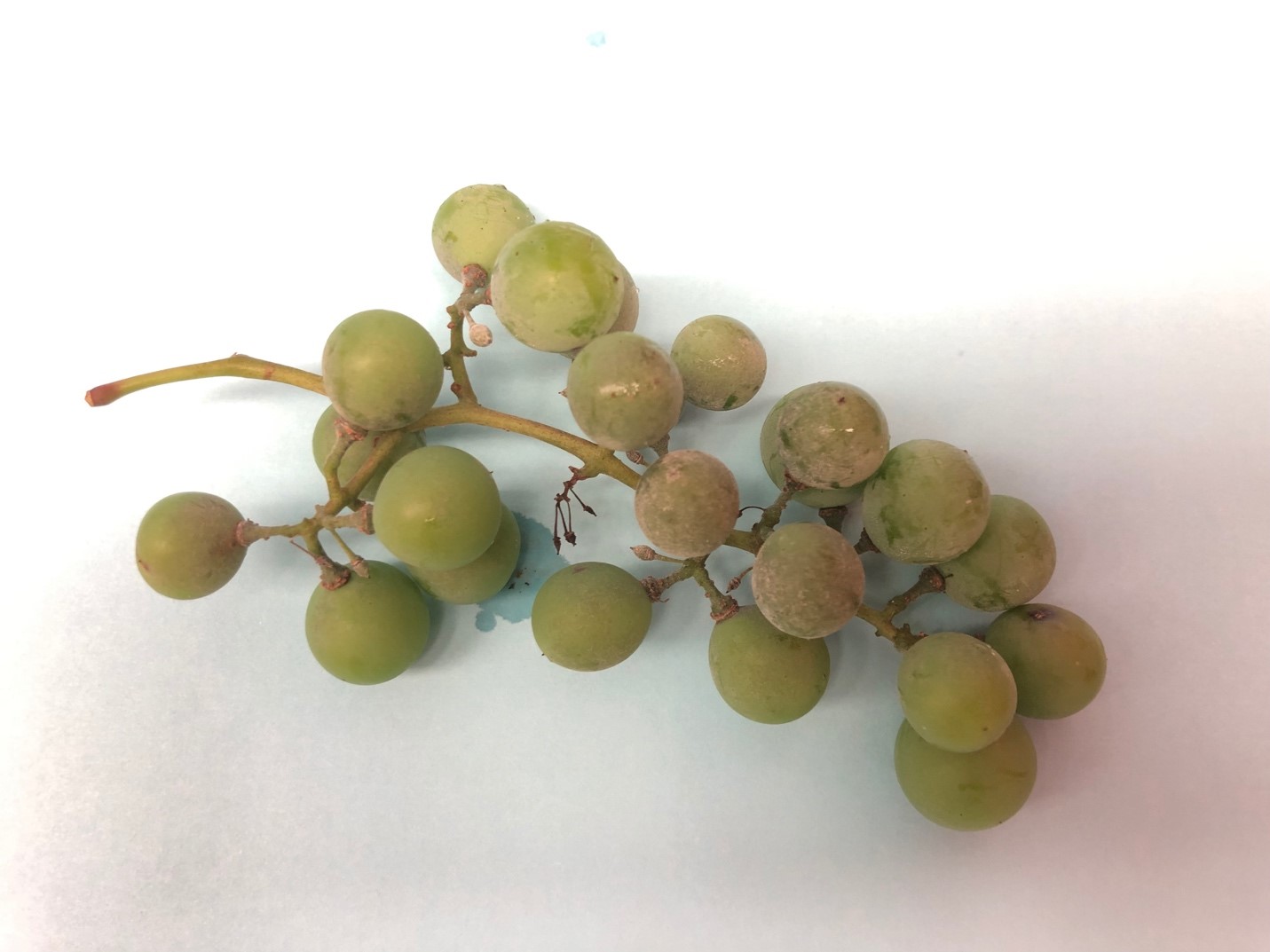MSU vineyard IPM scouting report – Aug. 14, 2019
Veraison signals transition to preparing vineyards for the 2019 harvest. Scout your vineyards to help ensure good fruit quality.

This is the sixth integrated pest management (IPM) scouting report we are sending out for 2019 based on visits to multiple juice and wine grape vineyards. This report will be available every other Wednesday throughout the growing season. There are various insect and disease issues that are highlighted below, and these vary in intensity from site to site and from southern to northern Michigan. This highlights the need to scout your own vineyards. Careful scouting is time well spent to catch any issues that might otherwise develop through the rest of the summer and cause issues with the harvest.
In southwest Michigan, many wine grape varieties are entering veraison while juice grapes are not quite there yet. In the northwest, cluster development for tight clustered cultivars is at bunch closure, and loose clustered cultivars are at berry touch. In Leelanau and Old Mission AVAs (American Viticulture Areas), the current stage of cluster development for tight clustered cultivars like 'Riesling' is at bunch closure, and berry touch for loose clustered cultivars like 'Merlot'.
Insect report
In southwest Michigan, egglaying for the third generation of grape berry moth was predicted to occur late last week (Table 1). In northwest Michigan, grape berry moth is still far off from the predicted start of the third generation egglaying. See the table below for approximate wild bloom dates and subsequent grape berry moth predictions in your region.
If you have been keeping an eye on wild grape bloom on your own farm, use the Michigan State University Enviroweather grape berry moth model to have a more precise prediction for control dates for either second generation or third generation grape berry moth. Third generation egglaying occurs at 1,620 growing degree days (GDD) base 47 degrees Fahrenheit after bloom of wild grapes.
Note that the model for this provided on the MSU Enviroweather website predicts the start of egglaying by this pest, so long-lasting insecticides that are active on eggs and young larvae are most effective at this time. If using a broad-spectrum insecticide, delay the spray for this generation by 100 GDD to be timed more for egg hatch, i.e., 1,720 GDD. In high pressure sites where grape berry moth is at high levels on vineyard borders, a follow-up application at the vineyard borders might be needed between this and harvest time to reduce infestation.
|
Table 1. Timing of grape berry moth generations during 2019 at four primary grape-producing counties. | |||
|---|---|---|---|
|
County |
Wild grape bloom 2019 |
Start of second generation egglaying (810 GDD after wild grape bloom) |
Start of third generation egglaying (1,620 GDD) |
|
Berrien |
May 31 |
July 8 |
Aug. 9 |
|
Van Buren |
June 1 |
July 7 |
Aug. 8 |
|
Allegan |
June 4 |
July 11 |
Aug. 13 |
|
Leelanau |
June 18 |
July 22 |
Late August or early September |

Grape better moth eggs are laid directly onto fruit clusters and they can be difficult to see due to their small size (approximately 1 millimeter in diameter). The egg’s shiny exterior can be helpful in spotting them. After three to six days, the eggs will develop black spots showing the larva’s head (Photo 1), and the larvae will begin to feed on the clusters. They leave visible holes at feeding sites and webbing between berries as they move within the cluster (Photo 2). The third generation feeds inside the berries and can hollow-out grapes. Infestation is typically greatest on the vineyard edge near woods or hedgerows, compared to the interior.
Based on the timing of the third generations (Table 1) starting this month, the likelihood of a fourth generation of this pest is relatively low for 2019. This is because eggs laid after early August (when day length gets shorter and shorter) are increasingly likely to be triggered to diapause. This causes the larva to develop through to the pupa stage and stop there in preparation for winter. While unusually hot fall weather can change this trend, we expect lower moth activity and infestation pressure in September, and will continue to monitor this during our scouting.
Japanese beetle damage continues on leaf shoots where these beetles are still active. The beetles feed on the upper surface of leaves and cause skeletonized damage. Vines can tolerate a lot of this and unless crop load is very high, some leaf area loss should not cause economic losses. Potato leafhopper feeding can cause leaf yellowing and cupping of leaves as well as reduced shoot growth. This pest has been active in a few isolated locations, primarily in specific wine grape varieties.
Brown marmorated stink bug (BMSB) and spotted wing Drosophila (SWD) are being found in vineyards. However, grapes are not a preferred host for either pest and BMSB counts are very low and the berries are not susceptible to SWD until closer to harvest.
Disease report

This week, a variety of vineyards were scouted in both northwest and southwest Michigan. In southwest Michigan, vineyards were are at or near veraison. Grapes at this point are resistant to black rot infections but symptoms of black rot were readily observed in all locations. Foliar lesions were particularly noticeable at a research vineyard in Clarksville, Michigan, in a Niagara grape block. Downy mildew has been noticed as well in Niagara and defoliation caused by downy mildew is becoming apparent (see previous IPM reports for more information about these diseases).
In Leelanau and Old Mission AVAs, there has been an uptick of observed powdery mildew (Photo 3) and downy mildew infected leaves. This increase in powdery mildew and downy mildew pressure is an effect from the rain events that occurred two to three weeks ago combined with recent cooler nights that led to dense canopies, which increased micro-climate humidity and difficulty achieving full spray coverage.

This week in the Lawton, Michigan, area we noticed ripe rot of grape caused by a fungal pathogen (Colletotrichum spp.) in a Concord block of grape noted by orange sporulation on drying berries (Photo 4). Ripe rot of grape is often considered a minor disease of grape, but parts of the southeastern U.S. have had sporadic outbreaks in recent years. At this time, little is known about the life cycle of ripe rot and it is unclear if any management practices would assist in controlling this disease.
Also this week in southwest Michigan, it was possible to see powdery mildew on several grape varieties on both leaves and fruit (Photo 5). Powdery mildew caused by Erysiphe necator is a fungal pathogen that most growers see every year. The fungus can infect all green tissues of the grapevine and develops as white powdery blotches on fruit and mature leaves, and distortion (curling) of grape shoots or leaves.
Current forecasted Michigan conditions are favorable towards infection. The fungus can infect at temperatures between 59 to 90 F, but 68 to 77 F are optimal for infection. High relative humidity is conducive for conidium production and 40 to 100% relative humidity range is sufficient for germination of conidia and infection.

A variety of chemical treatments are available to control powdery mildew as long as significant resistance is not already present within a particular field.
Foliar treatments labeled for powdery mildew listed alphabetically by mode of action, then alphabetically by trade name (active ingredient):
- Demethylation Inhibitors (FRAC code three): Elite and generics (tebuconazole), Mettle 125 ME (tetraconazole), Rally 40WSP (myclobutanil), Rhyme (flutriafol) and Viticure (triflumizole).
- Quinone outside Inhibitors (FRAC code 11): Abound and generics (azoxystrobin), Flint (trifloxystrobin) and Sovran 50WG (kresoxim-methyl).
- Quinolines (FRAC code 13): Quintec (quinoxyfen).
- Phenyl acetamide and Benzophenone (FRAC codes U6 and 50, respectively): Torino (cyflufenamid) and Vivando (metrafenone), respectively.
- Multiple active ingredient formulations: Inspire Super (difenoconazole and cyprodinil), Luna Experience (fluopyram and tebuconazole), Pristine (pyraclostrobin and boscalid) and Quadris Top (difenoconazole and azoxystrobin).
- Other products (not a comprehensive list): Biologicals (e.g. Serenade Max or Sonata), Contact materials (e.g. Kaligreen or JMS Stylet Oil) and Elemental sulfur.
This report and associated scouting is funded by a Michigan Craft Beverage Council grant and by MSU’s Project GREEEN. For more on MSU’s grape IPM information, visit MSU Extension’s Grape Pest Management page.



 Print
Print Email
Email









